9 Things to Do in Medellin, Colombia
Welcome to Medellin in Colombia, the City of Eternal Spring. In this blog post you can read about some of the best things to do in Medellin, including details on how to visit some of its top neighbourhoods like Comuna 13, El Poblado and the Historic Centre. You’ll also find ideas for more relaxing or fun activities, and day trips to do from the city.
If you’d like to see what we got up to, then make sure to watch our dedicated Medellin video on our YouTube channel. For more Colombia videos check out our Colombia Series.
Disclosure: This post may contain affiliate links, which means we may receive a small commission if you click a link and purchase something. Clicking these links won’t cost you anything, but it will help us to keep this site up and running! Learn more about our affiliate policy.
Introducing Medellin, Colombia
Medellin is located in the Aburrá Valley, over 400 km northwest of the country’s capital, Bogotá. Due to an elevation of 1,495 m (4,905 ft) above sea level, the city enjoys mild temperatures all year-round. For this reason, Medellin is often called the City of Eternal Spring.
With a population of over 2.5 million people, Medellin is Colombia’s second most populous city. It was founded in 1616 by Francisco de Herrera Campuzano under the name San Lorenzo de Aburrá. The name was changed again before the city became officially known as Medellin.
Located on the main route between Bogota and the Caribbean Coast, Medellin became an important transport hub in the 20th century. During this time, it also became a major centre for coffee production.
Unfortunately, between the 1970’s and 1990’s, drug-related violence and crime increased dramatically in Medellin. Since the 1990’s, the city has undergone a massive transformation, and in 2013 it won the Urban Land Institute’s Innovative City of the Year Award.
Today, Medellin is one of the most popular cities to visit in Colombia. In recent years, it’s also become a favoured hub for digital nomads and remote workers.
Our Top Travel Resources to Visit Medellin
- 🛏️ Find your accommodations with Booking.com
- 🎫 Book an organised tour in Medellin with GetYourGuide or Viator
- 📱Get an eSIM with Airalo to be able to use data
- 🛡️ Don’t forget to buy travel insurance via SafetyWing


9 Things to Do in Medellin, Colombia
1. Take a Tour of Comuna 13
Once one of the most violent areas in Medellin, today Comuna 13 is one of the most popular places to visit in the city.
What is a comuna? You might be thinking that comuna is just another name for slum. In fact, Medellin is split into 16 different comunas. For example, the upscale El Poblado district is technically Comuna 14 and the Historic Centre is Comuna 10.
Comuna 13 has a very violent past. In the 80’s and 90’s it was run by drug trafficking organisations, who used this area as their transit hub in and out of Medellin. In 2002, the government decided to intervene and implemented multiple military operations in the district. This resulted in innocent people being killed or put on trial for supposedly helping these organisations.
In 2006, the mayor invested a lot of money towards making positive changes for the people of Comuna 13. One of these changes was the construction of a new cable car line. Later, a series of escalators were built into the side of the hill too. This new infrastructure improved resident’s quality of life through greater access to jobs and education.
As part of the transformation, public spaces and recreational facilities were also added. A huge focus was also put on the development of culture and art. You’ll quickly notice that the streets of Comuna 13 are now filled with meaningful street art and murals.
This transformation wasn’t all sunshine and rainbows though. It involved the destruction of homes, businesses and the relocation of some residents. Although the comuna is a much safer and liveable place today than it used to be, there are still issues to address.
Even with all the current challenges, Comuna 13 is a great example of how urban design can improve accessibility and create a positive change for residents.
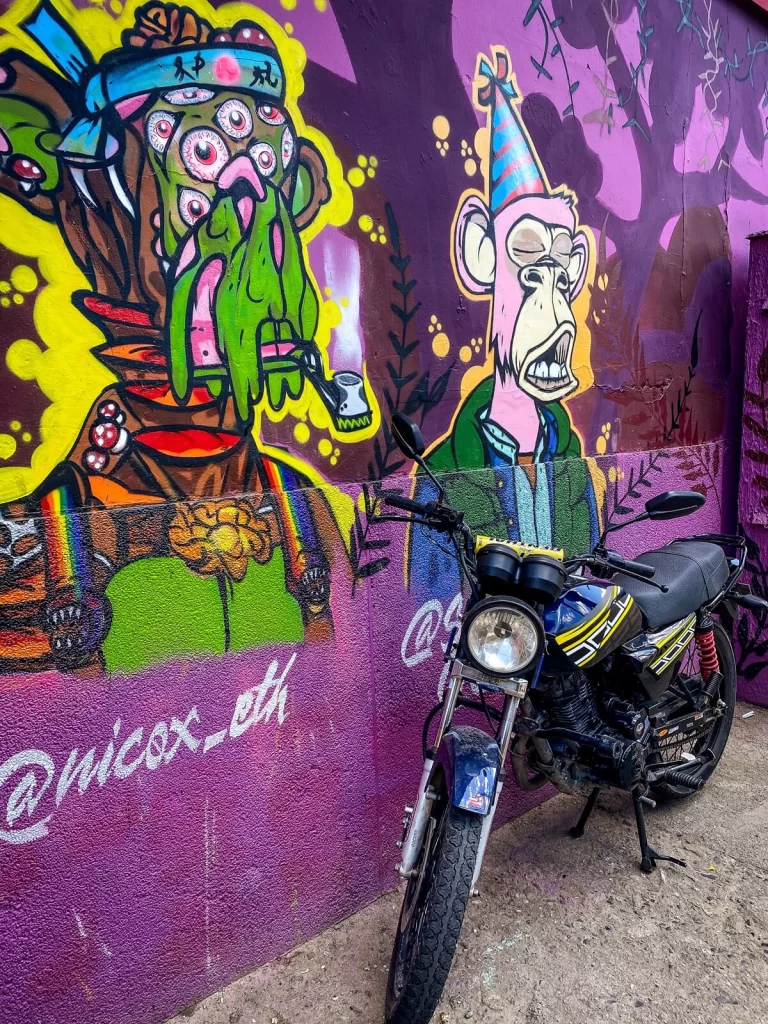
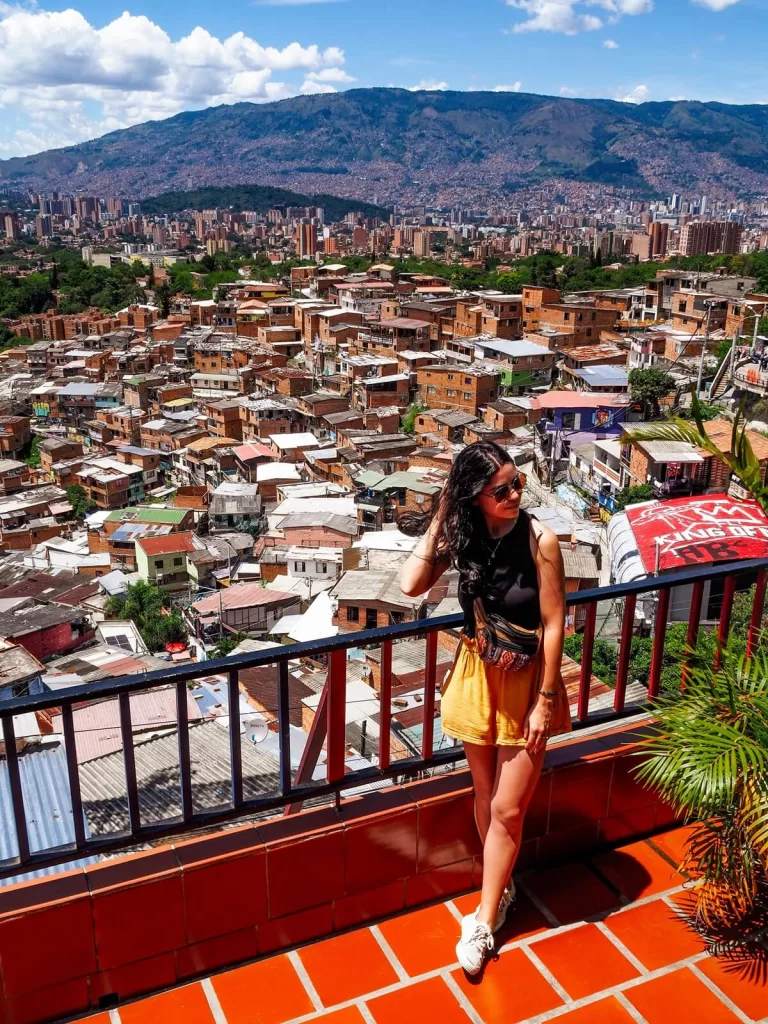
How to Visit Comuna 13 in Medellin
Whilst you can visit Comuna 13 on your own, we highly recommend taking a walking tour. We went with Zippy Tours, which is run by local guides who have always lived in Comuna 13. The guides are fantastic at telling the history of this part of Medellin, including their own experiences of living there, as well as detailing the ongoing positive changes.
Taking a tour is the best way to understand the troubled past of Comuna 13 whilst also allowing you to focus on all the positive changes that have been happening in recent years as well.
Top Tip. This walking tour is free, but we recommend leaving a generous tip, especially if you’ve enjoyed the experience. Your contribution is being directly invested back into the community, by helping to support local artists and children.
How to get to Comuna 13. The best way to reach Comuna 13 is by taking Metro Line B to San Javier, which is the last stop. If you’re visiting with a tour, this metro stop is normally the meeting point. If you’re not on a tour, then from the station you can either walk to the escalators or take the bus. You can check out Medellin’s Metro Map to see which station is closest to you.
The bus stop is just on the other side of the road from the station. Lots of people will be waiting there, so you can’t miss it. Plus, it’ll have a sign saying escalaras electrica. A one way ride costs around 1,000 COP.
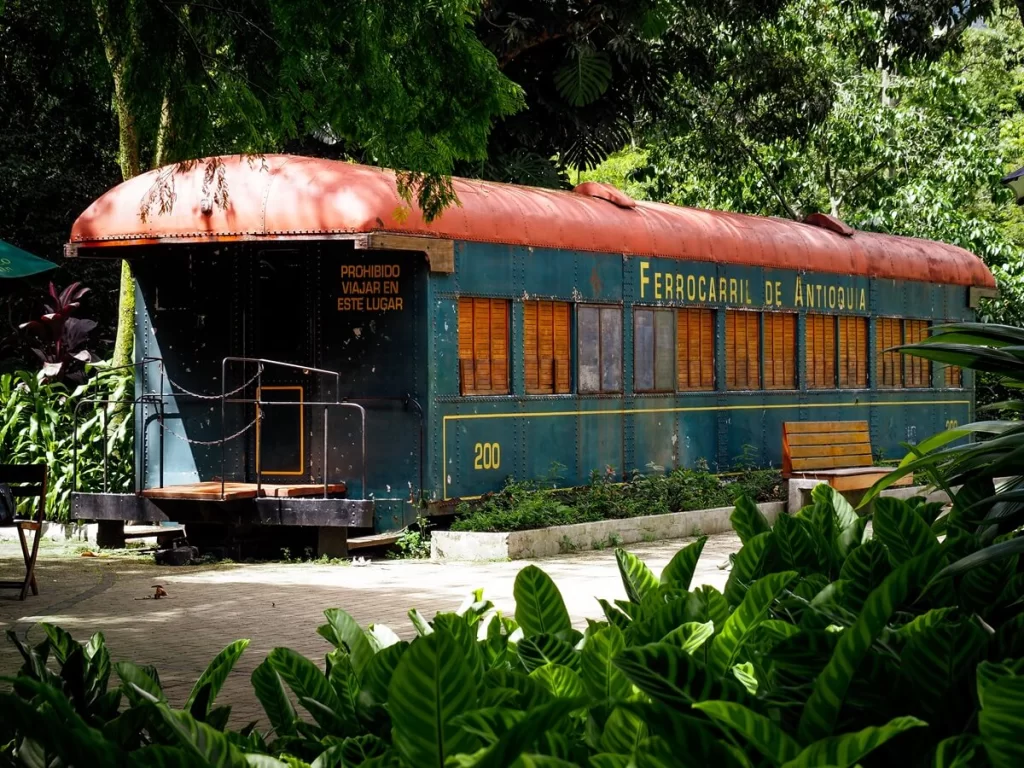
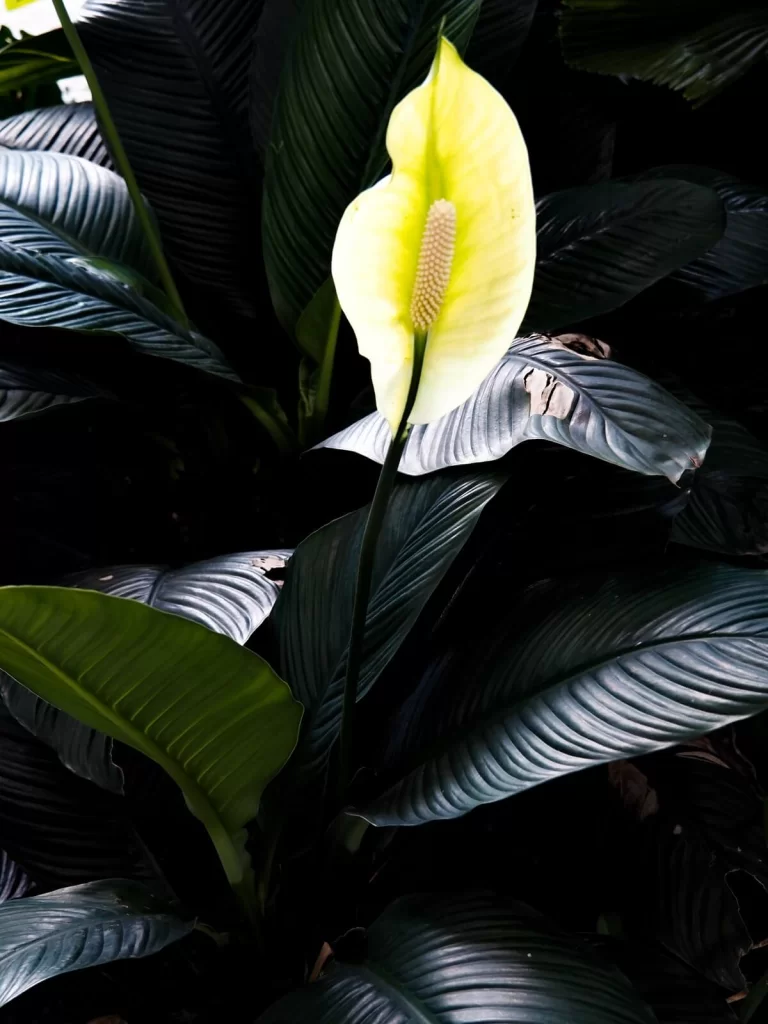
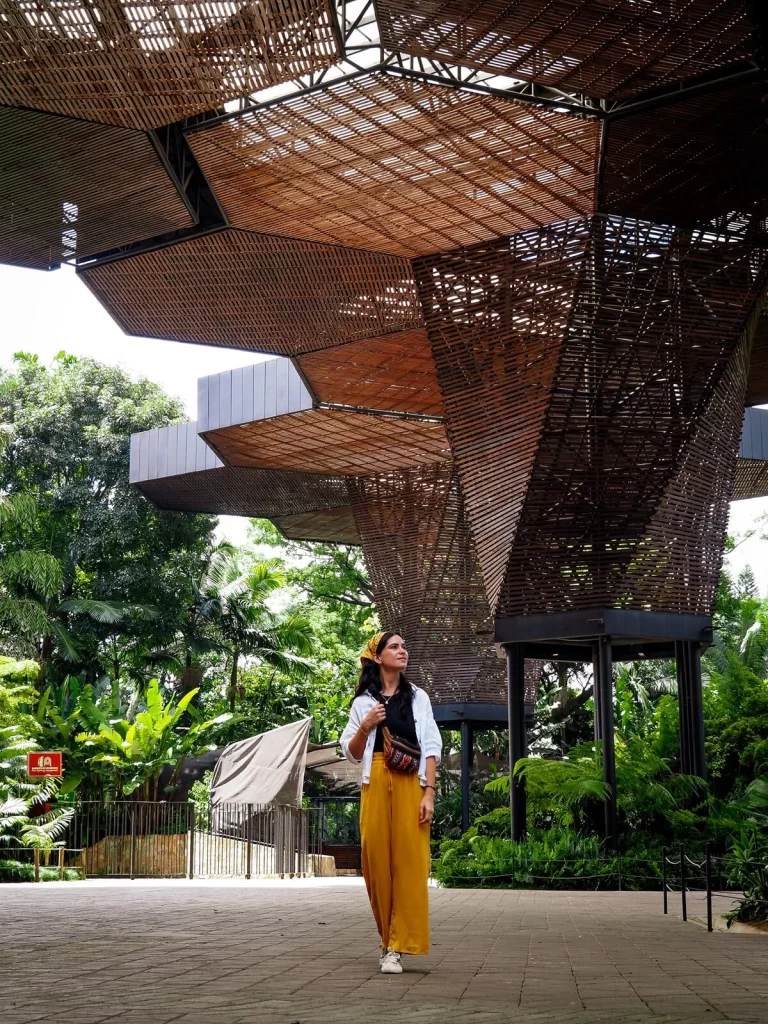
2. Visit the Botanical Garden (Jardín Botánico de Medellín)
Escaping the city’s hustle and bustle is always one of our favourite activities wherever we go. One of the best places you can do that in Medellin is at the Botanical Garden, located to the north of the historic centre of the city.
The 14 acres of garden are home to thousands of species of plants. There are dedicated sections, such as the Tropical Forest, the Palm’s Garden and the Butterfly House. You can even see a few animals, like iguanas, roaming freely in the park.
One of the main highlights of the Botanical Garden is the Orquideorama, a massive bronze structure built in 2006. The structure is comprised of 10 hexagonal shapes that look like trees or bouquets of flowers. There are orchids, and other plants, planted at the base of each structure.
How to get to the Botanical Garden of Medellin. The closest metro stop is called Universidad, which is located on Line A. You can check out Medellin’s Metro Map to see which station is closest to you.
Entry fee: free.
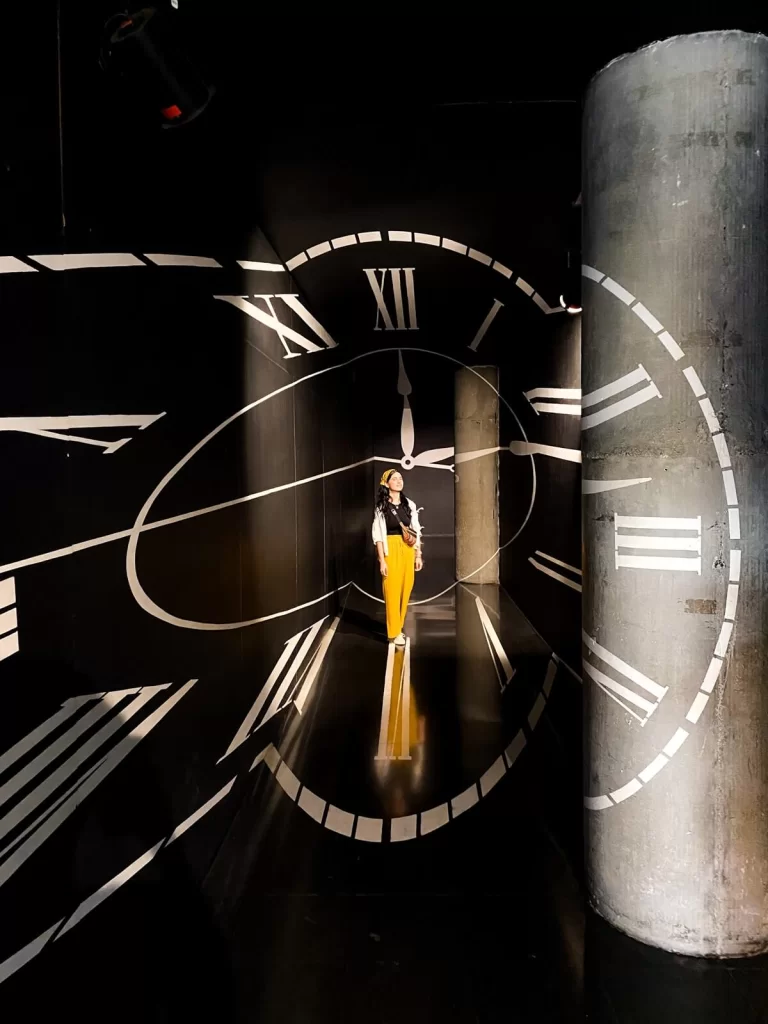
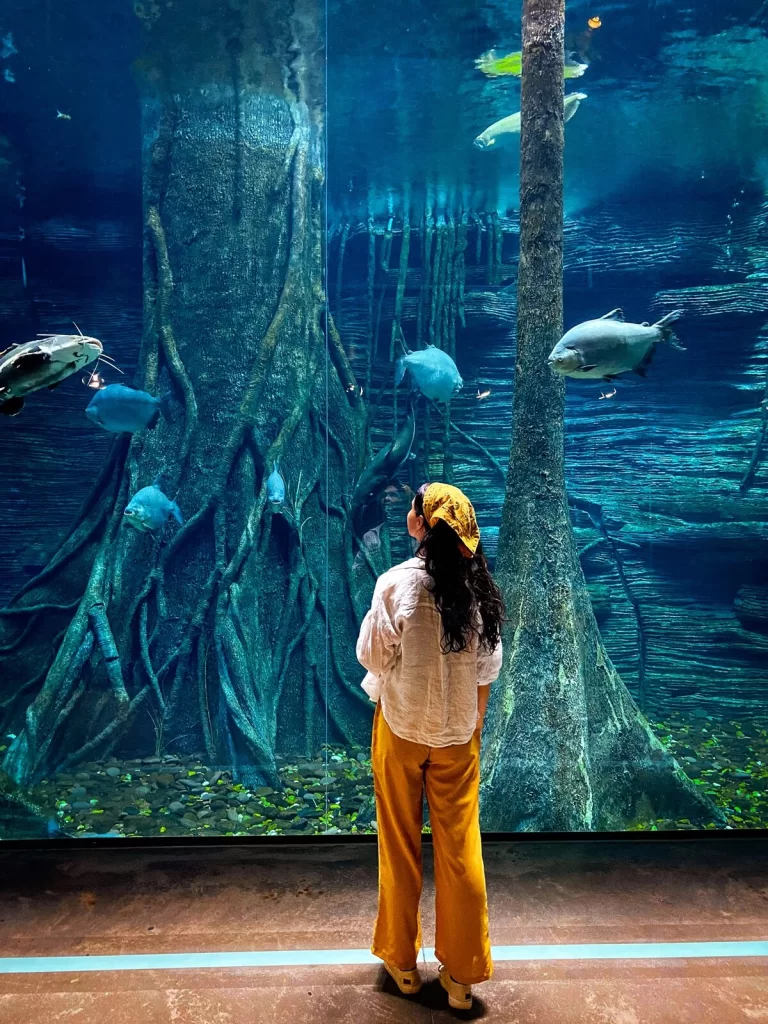
3. Have Fun at Parque Explora
Right next to the Botanical Garden is a fun place called Parque Explora. It’s an interactive science and technology museum designed by Alejandro Echeverri as part of the urban development project in the city. It opened in 2008, and visitors can enjoy hundreds of interactive activities and exhibits divided into differently themed rooms.
The most popular section of Parque Explora is the Aquarium, which is the largest freshwater aquarium in South America. It has a capacity of 580,000 litres of water and contains a wide variety of species from Colombia. One of them is the Arapaima (or pirarucú), one of the largest freshwater fish in the world.
You can also visit the Vivarium, where you can see smaller animals such as snakes and frogs, including some unique poisonous ones.
The main structure of Parque Explora is comprised of four huge red boxes. They contain four different rooms, each focused on a specific theme such as mind, music, scene and time. You can walk through each room and investigate these topics further. The best part of these rooms is that you can get hands on by trying out different musical instruments, creating your own fun music videos and short films, and playing games; all the while learning more about each particular topic.
There’s also a large outdoor space where you can try out some interesting science experiments and games. In addition, you can also visit the Planetarium next door for an extra fee.
Entry fee: 48,000 COP ($12.5 USD). This includes all areas apart from the Planetarium. If you want to visit that too, then you’ll have to buy a combo ticket which costs 72,000 COP ($19 USD). This ticket also includes a show and is valid for two days rather than one.
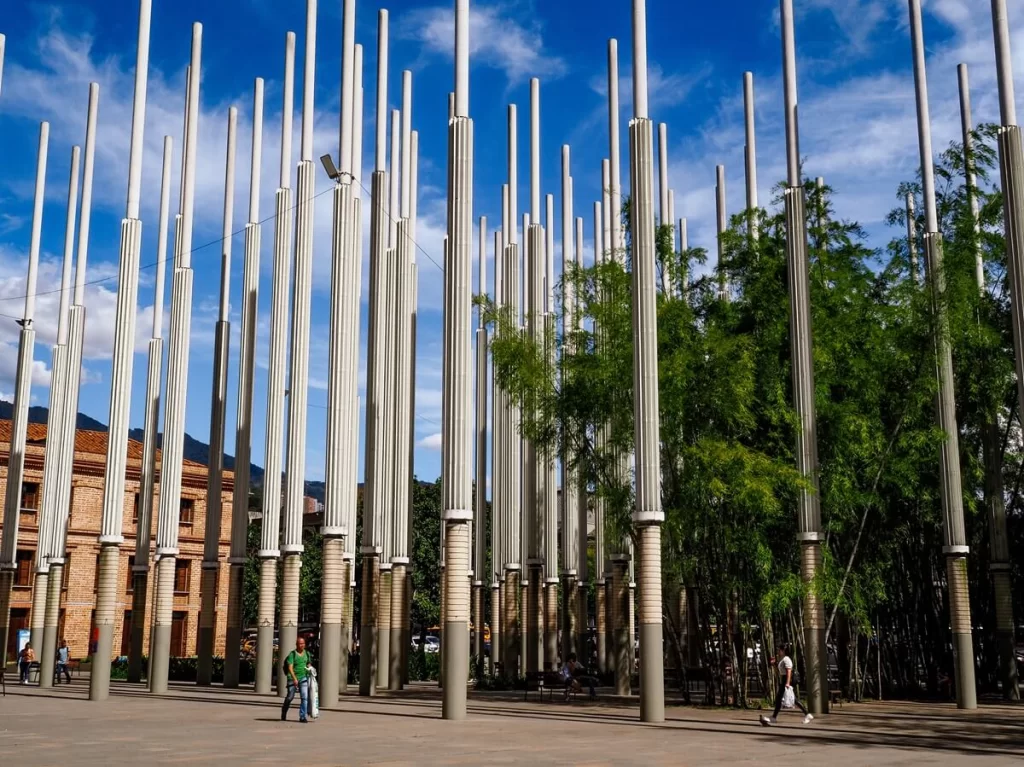
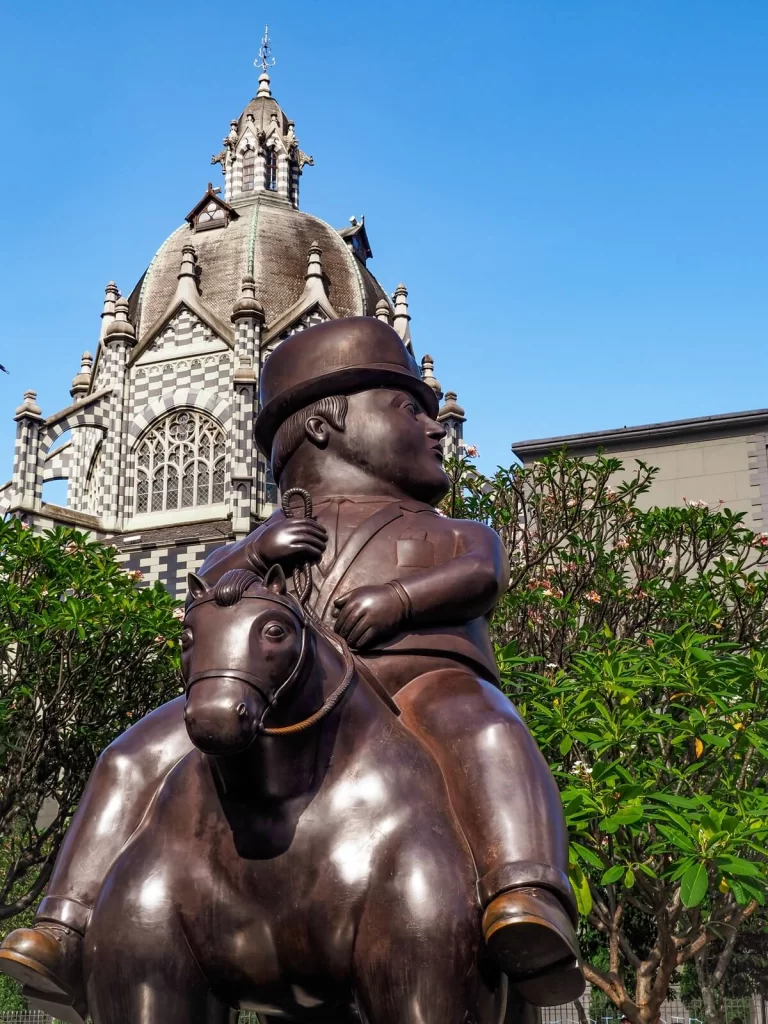

4. Walk Around the Historic Centre of Medellin (La Candelaria)
Medellin’s Historic Centre, also known as La Candelaria or El Centro, is another area of the city that you should add to your itinerary. Below are some unmissable spots within this part of Medellin.
Plaza Botero. This is possibly the most visited part of La Candelaria. The highlights of the square are the various sculptures by Fernando Botero, Colombia’s most famous international artist, who was born in Medellin. He has a signature style called ‘Boterismo’, which depicts people and animals in large volumes, and can often represent political criticism or humor. At Plaza Botero, you’ll find over 20 of Botero’s bronze statues.
Museum of Antioquia. If the statues piqued your interest and you want to see more of Botero’s work, then visit the Museum of Antioquia right next to the plaza. The museum displays more of his sculptures and many of his iconic paintings. There are also other Colombian and international artists’ works on display in this museum.
Palace of Culture Rafael Uribe Uribe. Another iconic building in Plaza Botero is the Palace of Culture. It is a very photogenic building from the outside, but you can also go inside for free. On the top floor you can get a nice view over the city centre.
Museo Casa de la Memoria. Just east of Parque Bolivar, this museum is dedicated to the history of violence and injustice in Medellin and Colombia.
National Palace Hall. The perfect place for shopping, or just admiring the interior of this beautiful building. It even has an art display.
Park of Lights (Parque de las Luces). It used to be the main marketplace in the city (Plaza Cisneros) where most traders would arrive by train. Due to the decline of the railroads, the market was moved to a better location and the plaza became a rather shady part of the city. However, during the regeneration of the city centre, around 300 pillars were constructed in the square, each containing an illuminated strip. This definitely gave the square a new lease of life, and has made it a popular meeting spot.

Things to Know Before Visiting the Historic Centre of Medellin
How to get to the Historic Centre of Medellin. You can use the Line A metro and get off either at San Antonio or Parque Berrio stations. You can check out Medellin’s Metro Map to see which station is closest to you.
Safety Note. You’ll immediately notice that La Candelaria has a completely different feel to other, more upscale parts of Medellin. It’s definitely got a bit more of an edge to it. Which is why we recommend not bringing a lot of valuables with you, wearing your backpack on your front – just like locals do – and staying more vigilant.
Whilst we didn’t feel unsafe, we definitely noticed a lot more eyes on us than in El Poblado for example. We highly suggest you avoid walking around on your own here after dark and get a taxi or Uber instead.
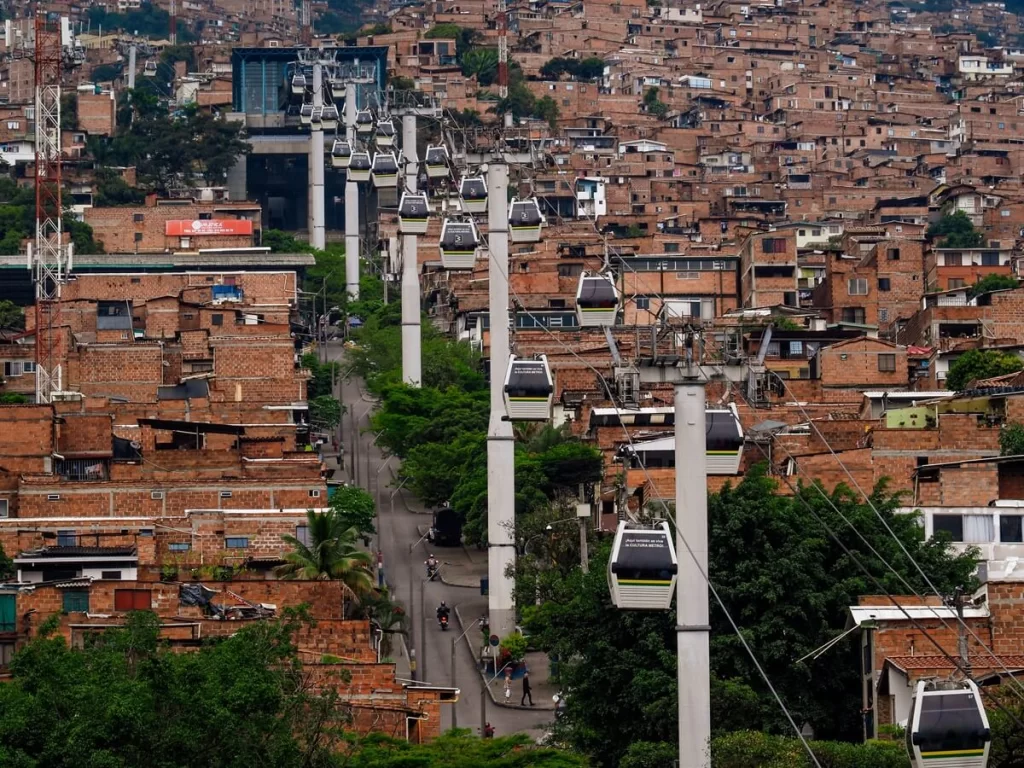
5. Go Hiking in Parque Arvi
Another great place to escape the city noise is in Parque Arvi. It is a 16,000 hectare ecological nature reserve offering activities such as hiking, biking, horseback riding or just relaxing.
Many people visit the park, especially on the weekends. Hiking is one of the most popular activities within the park, although the system can be slightly confusing. There are paid and free self-guided trails, or guided hike options.
Finding the trailheads isn’t that straightforward. For this reason, download Maps.me to be able to navigate more easily around the park.
If you don’t want to hike, you can always rent a bike or go horseback riding. You can also check out the market and the restaurants for some lunch.
How to Visit Parque Arvi
How to Get to Parque Arvi. The journey to the park is a fun activity in itself. You can reach Parque Arvi via the metro and cable cars from Medellin. First you’ll need to get to Acevedo metro station, located north of the city along Line A. From there you can transfer to Cable Line K and take it to the Santo Domingo Station (last stop). There, you’ll need to transfer onto the Cable Arví Line L which takes you straight to the entrance of the park.
You can check out Medellin’s Metro Map to see which station is closest to you. Note that you can use your metro card for Line L but the ticket will be more expensive than regular routes (13,700 COP / $3.50 USD). The whole journey should take around 50 minutes.
Opening Times. Parque Arvi is open from Tuesday to Sunday, between 9AM and 6PM. The park is closed on Mondays for maintenance.
Entry Fee. There are free and paid self-guided trails you can go on. You can also join a guided tour or rent a bike for an additional fee.
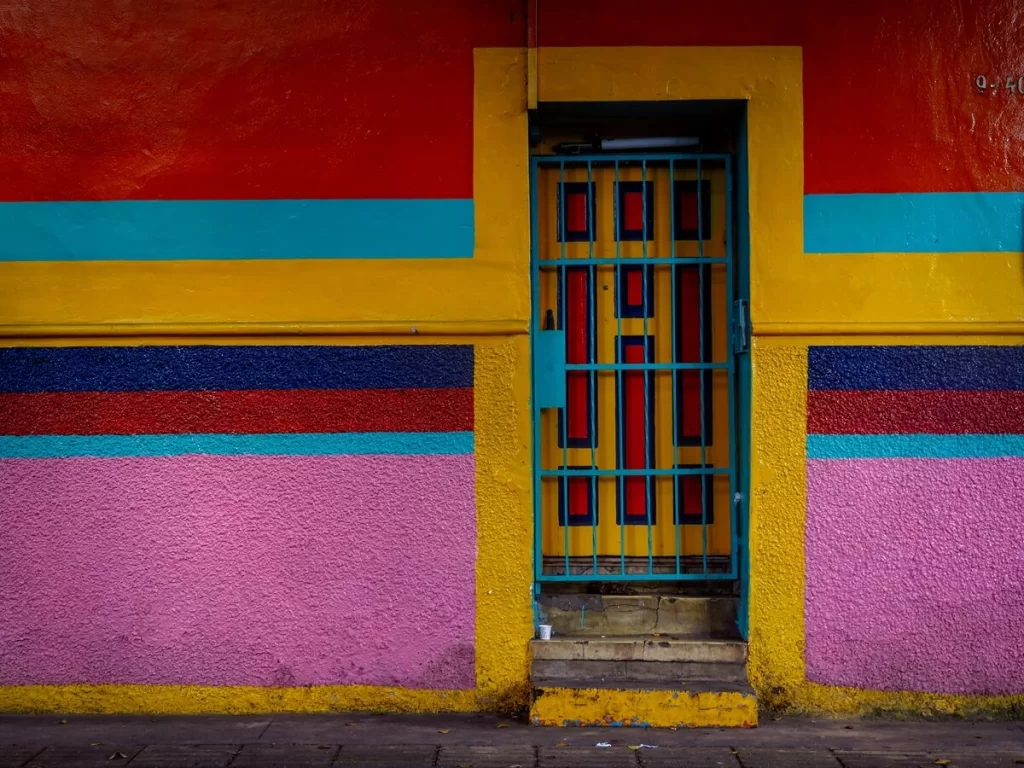
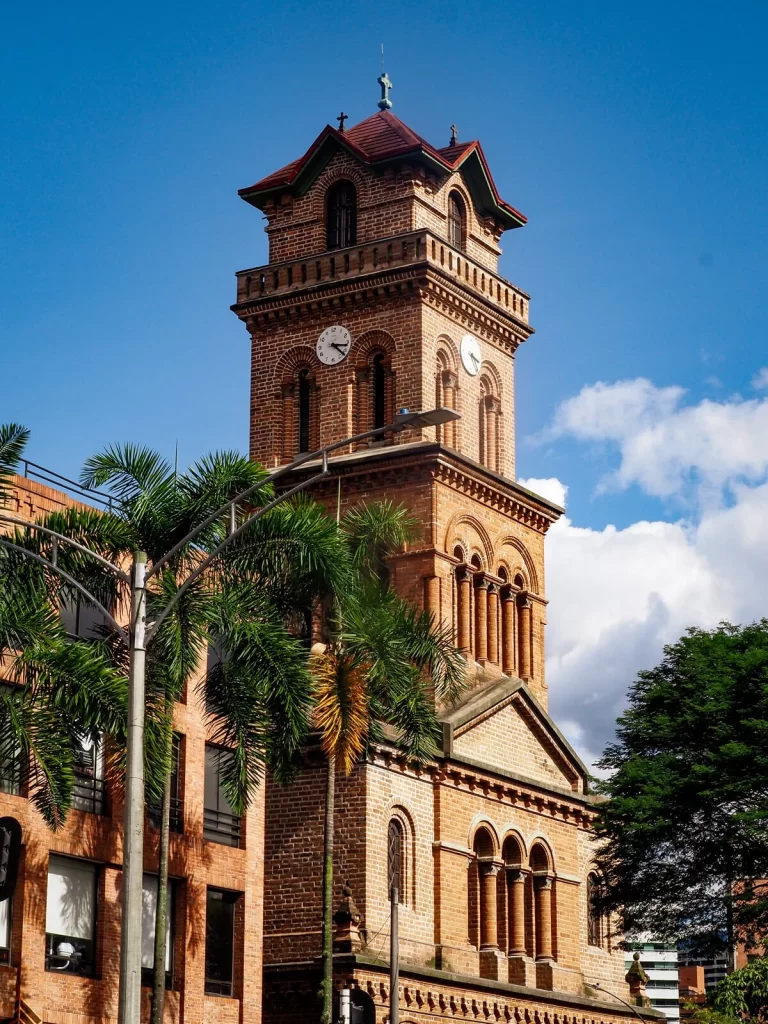

6. Wander Around El Poblado Neighbourhood
Whilst not the most authentic area in Medellin, El Poblado is a popular district amongst visitors. Most tourists and digital nomads base themselves here since it’s known to be a safe neighbourhood with plenty of amenities.
Apart from great cafes, restaurants and clubs, this leafy district of Medellin also has a few other things to do that you can consider adding to your itinerary.
Modern Art Museum (Museo de Arte Moderno or El MAMM). The museum displays over 2,000 pieces of modern and contemporary art. The majority of the collections are from local artists such as Débora Arango. Entry fee is $20,000 COP ($5 USD).
Mercado del Rio. Not far from the museum you can visit this trendy food market. Located in a huge warehouse, it has over 50 food and drink stalls where you can try both Colombian or international cuisine.
Parque de El Poblado. Located in the centre of El Poblado, this plaza is a popular meeting place for locals and tours. You can browse the small artsy stalls or check out San Jose church (Iglesia de San José), a well-known landmark in this neighbourhood.
Find some street art. Whilst the street art scene in El Poblado is nowhere near as impressive as it is in Comuna 13, you can still find a few beautiful ones along the streets surrounding El Poblado’s main square.
Enjoy the nightlife. El Poblado has great nightlife, so if you’re not too tired after a full day of sightseeing, then definitely stay out a bit longer. Parque Lleras and Calle 10 are considered the centre for nightlife, with plenty of bars and nightclubs.
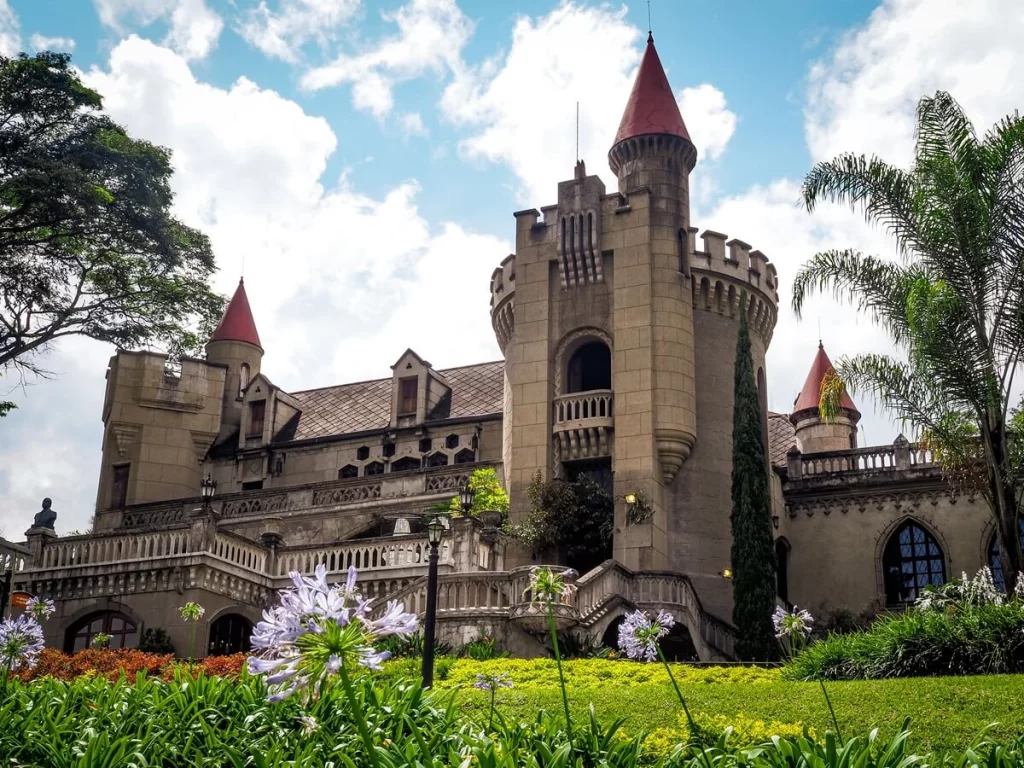
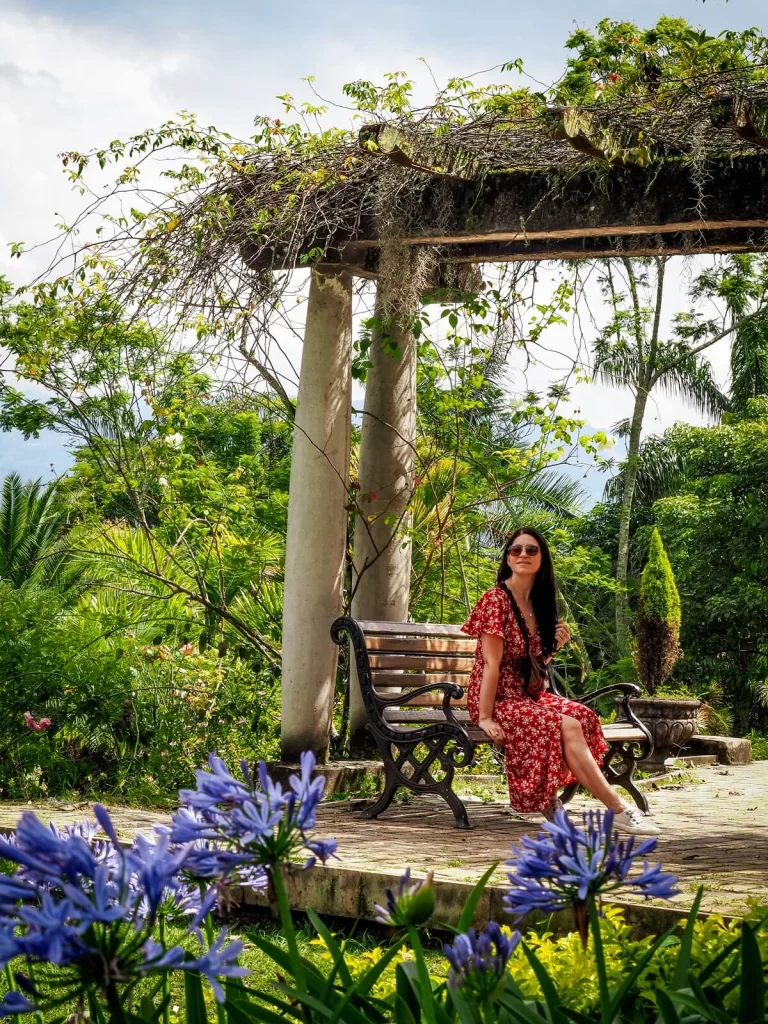
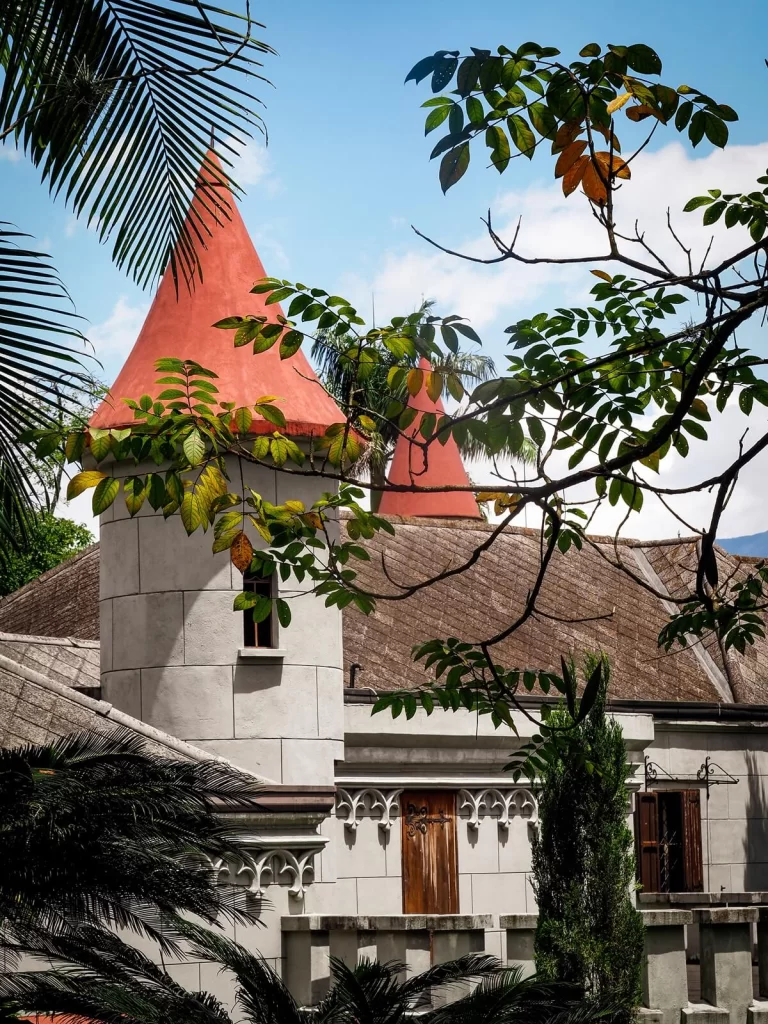
7. Visit the Castle Museum and Gardens (El Castillo Museum)
Possibly the most popular thing to do in the El Poblado neighbourhood of Medellin is to visit the Castle Museum and Gardens.
If you’ve been to, or are from, Europe, then you’ll quickly notice the resemblance to many European castles. It’s because the architect, José Tobón Uribe, was inspired by the castles in the Loire Valley in France. It was built in 1930, and purchased a few years later by Diego Echavarría and his wife, Benedikta Zur Niede.
Today the castle houses a large selection of arts and antiques from the 20th century. The beautiful formal gardens offer a lovely green space to walk around and also a fantastic view of Medellin.
How to Get to the Castle Museum. You can take Metro Line A to Aguacatala station. From there you can walk uphill for about 30 minutes. Alternatively, you can also hop onto the Poblado 133llA local bus that drives past the Castle Museum.
Opening Times: It is open from 9AM to 5PM Monday to Friday, and 10AM to 5PM at the weekends.
Entry Fee: 20,000 COP ($5 USD) to visit the gardens and tour the house. You can also just visit the gardens for 17,000 COP ($4.50 USD). Note that you cannot take photos inside the castle.
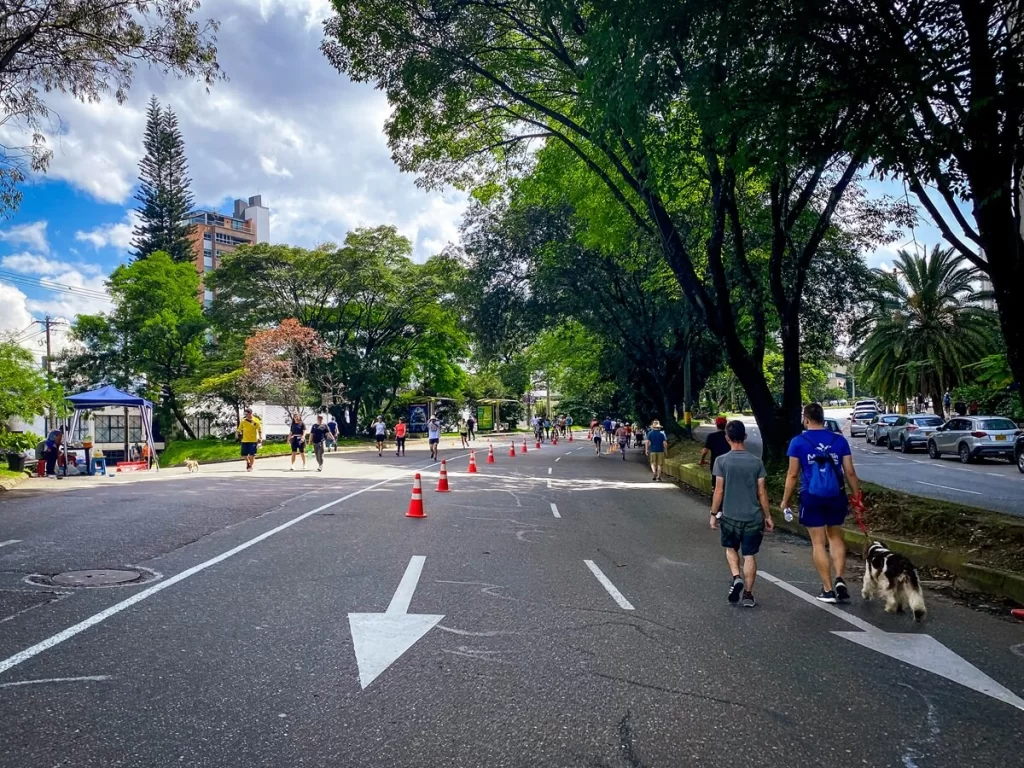
8. Enjoy the Car-Free Streets on Sunday
Every Sunday in big cities across Latin-America you can join in with the tradition called Ciclovia. As part of this initiative, sections of some of the bigger avenues are closed to car traffic and opened up for cyclists and pedestrians.
You’ll see plenty of people using the main road for walking, cycling, skating, and even dog walking. We spent many Sunday morning’s walking with the locals during our trip across South America, and it became one of our favourite activities.
If you’re after more authentic experiences in Medellin and your visit lands on a Sunday, then make sure to go for a walk or a jog with many other Colombian’s. There are ciclovias all across the city, such as on Avenida El Poblado.
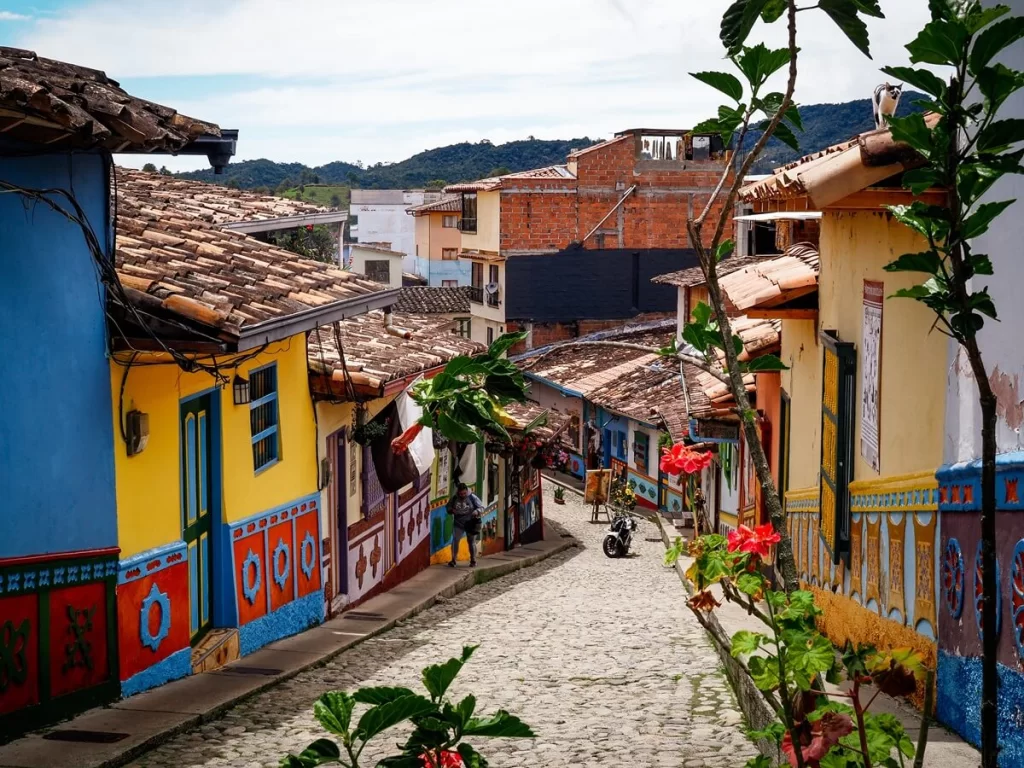
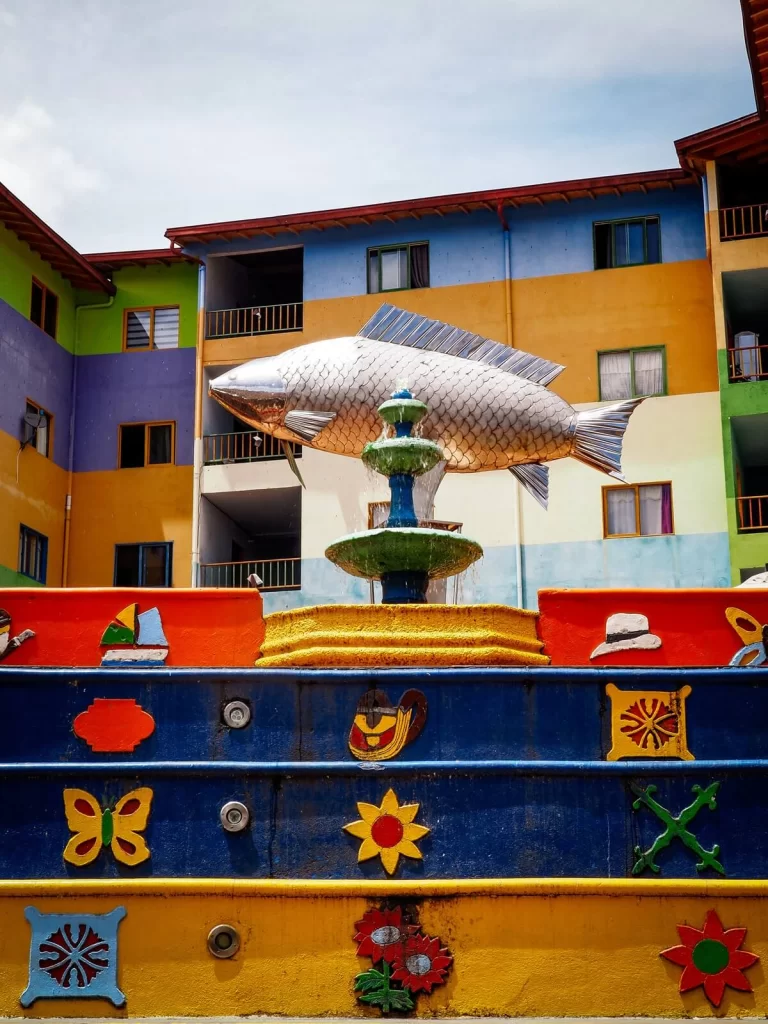
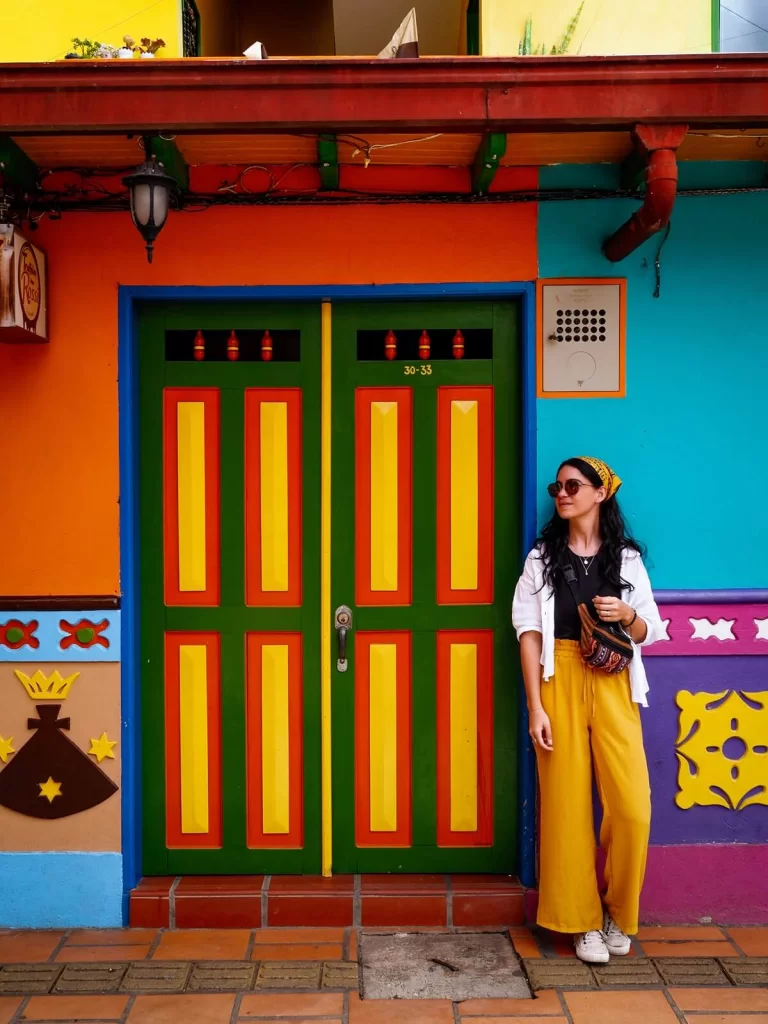
9. Take a Day Trip to Guatapé and The Rock (La Piedra del Peñol)
A must do thing whilst you’re in Medellin is to take a day trip to Guatapé and La Piedra del Peñol.
Guatapé
Located in the Antioquia region, Guatapé is the most colourful town in Colombia. The town was founded in 1811 by Don Francisco Giraldo y Jimenez. Before the Spanish arrived, indigenous groups used to live in the area. It used to be a farming town until they built a huge hydroelectric complex nearby in 1970. This didn’t only shape the landscape, but it also led to Guatapé becoming one of the important electric production centers in Colombia.
As you walk around the town, you’ll see that residents have painted every house in bright colours. What makes Guatapé even more unique is that the bottom of the buildings have fresco-like panels called ‘zócalos’. Some of the panels are decorated with animals, whilst others show different patterns or tell the history of the family or business. You can see plenty of examples everywhere you look, with some of the most popular spots being Calle del Recuerdo, Plazoleta de Los Zócalos, Calle 29 and Carrera 30.
Even though the town is very touristy, it’s a place you shouldn’t skip visiting.
Top Tip. If you have a little longer in Medellin, and want a quieter experience, then we highly recommend spending a night around Guatapé. You can fill up a day or so with a variety of activities in the area such as boat rides, water sports, and hiking.
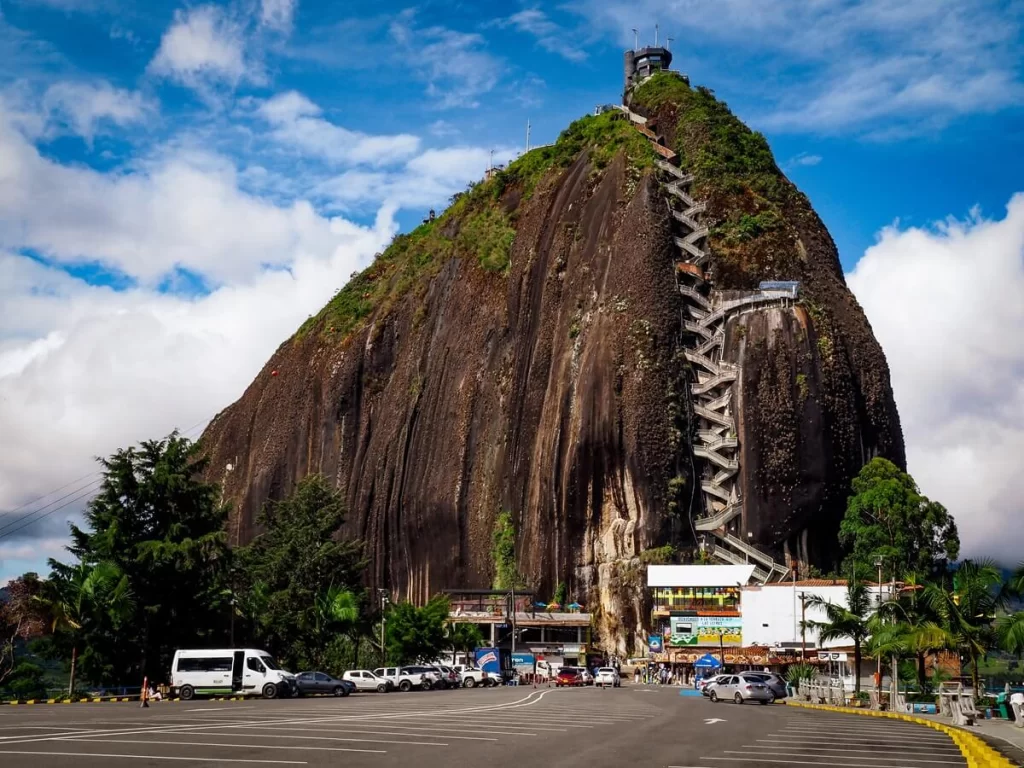
La Piedra del Peñol
The Rock, or El Peñol, is another must see attraction located only 2 km from Guatapé. This massive 220 m high granite monolith is one of the most iconic landmarks in Colombia.
El Peñol was formed millions of years ago through volcanic activity and erosion. As you would imagine, the rock has a deep spiritual and cultural significance. It was a gathering place for important events, and there are also plenty of legends and folklore associated with El Peñol.
Other than admiring it from a distance, you can also climb all the way to the top of it. You’ll have to ascend nearly 700 steps, but your efforts will be rewarded with panoramic views of the surrounding landscape. It takes between 20-25 minutes to reach the top at an average pace, and stopping a few times to take in the views.
There are some souvenir stores and a couple of restaurants both at the top and bottom of the rock.
Entry fee: You’ll have to pay 25,000 COP ($6.50 USD) to climb El Peñol.
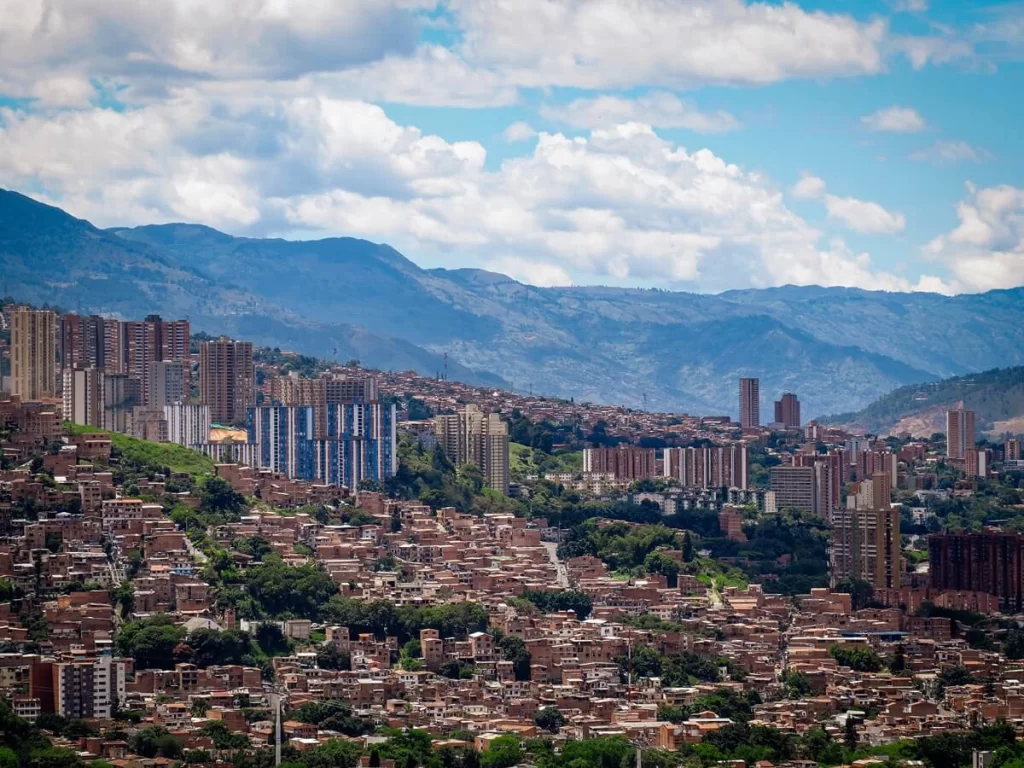
Final Thoughts on Things to Do in Medellin, Colombia
We absolutely fell in love with Medellin and can understand why many people add the city to their Colombia itinerary. With year round pleasant weather conditions, unlike Cartagena’s heat and humidity or Bogota’s cooler temperatures and higher altitude, Medellin is an ideal city to be based in for longer periods. You could easily spend 4 or 5 days here if you want to see the best of the city. Whilst we managed to see a lot during our stay, we would still be able to return and add plenty more sights and museums to our itinerary.
We really loved learning about the transformation of Comuna 13, walking around the Botanical Garden and acting like big kids at Parque Explora. Whilst the Historic Centre gets a bit of a bad reputation, it did feel more authentic than the upscale El Poblado district; although there are fantastic amenities there. Our only regret was visiting Guatapé as part of a day trip instead of adding an extra night there to truly experience it.
Have you ever been to Medellin, Colombia? If so, what places did you manage to visit? If not, what would you add to your Medellin itinerary? Let us know in the comments below.
Now, let your adventure begin,

Our Top Travel Resources
Accommodation: For hotels we always use Booking.com and Hostelworld for hostels. We also book longer stays on Airbnb or Vrbo.
Flights: To find the best flight prices we always check Skyscanner, Google Flights or WayAway. Then we also check the airlines’ websites too for comparison.
Car Rentals: We use Discover Cars when we want to rent a car as it compares local, national and international companies.
Activities: If we book organised tours we always check either GetYourGuide or Viator.
Foreign Currency: Whenever we can we prefer to pay in local currency and for that we always use our Wise card. We can easily withdraw money from the ATM or pay by card at most shops and restaurants.
Travel Insurance: We never go anywhere without travel insurance. You never know what will happen on your trip, so good travel insurance like SafetyWing can protect you in case of injury, illness, theft and cancellations.
eSIM and VPN: To get data abroad we use Airalo which is an app that allows you to download a prepaid eSIM to your phone in over 190 countries. Make sure to have a VPN to avoid hackers accessing your personal data when using public WIFI. We use Surfshark which is the only VPN that offers one account on unlimited devices.

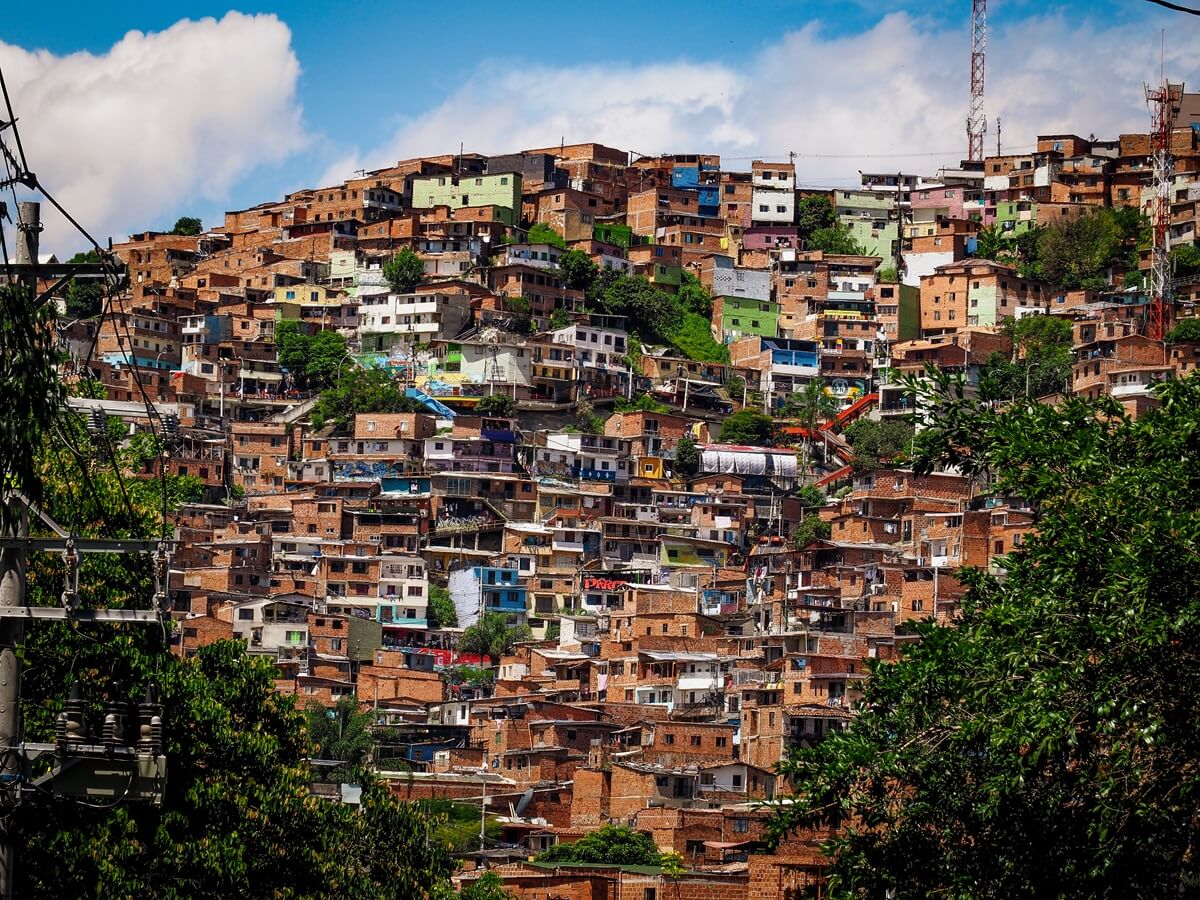
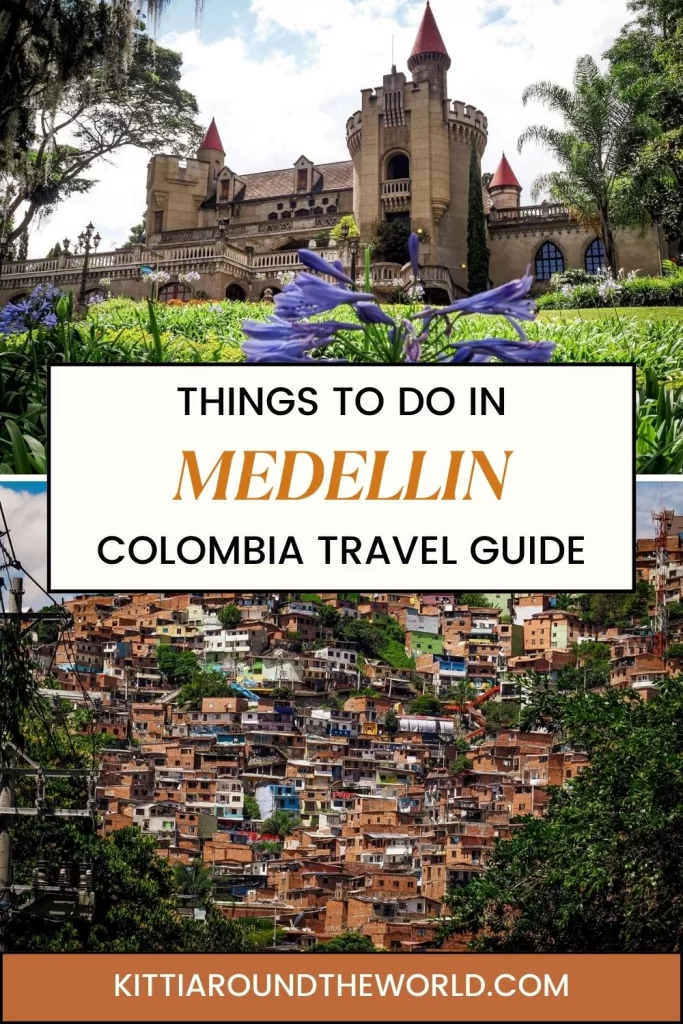
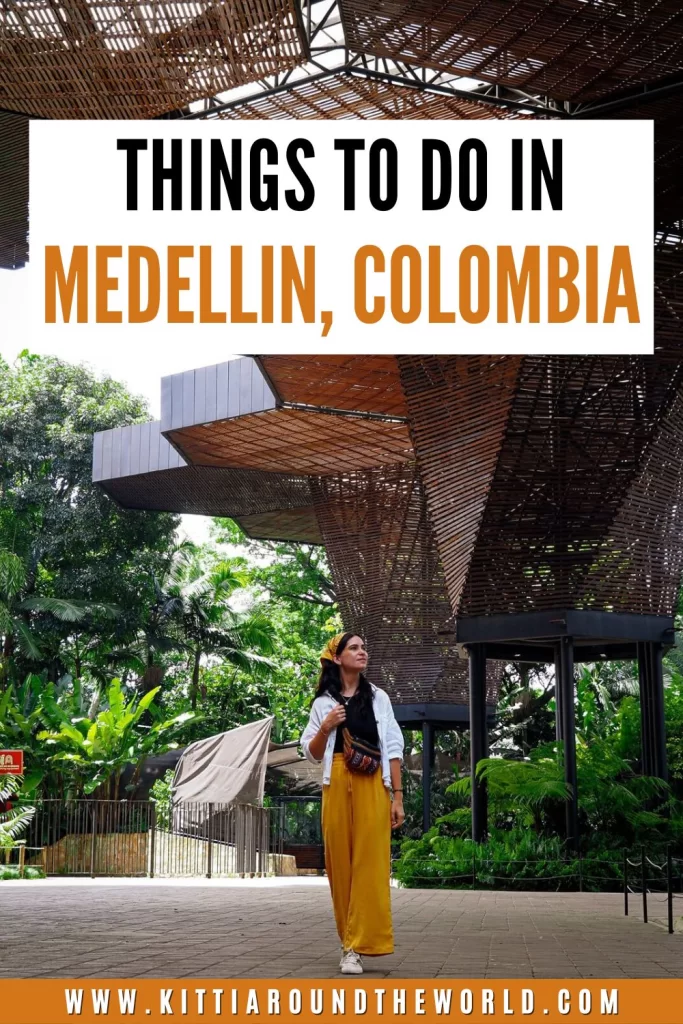
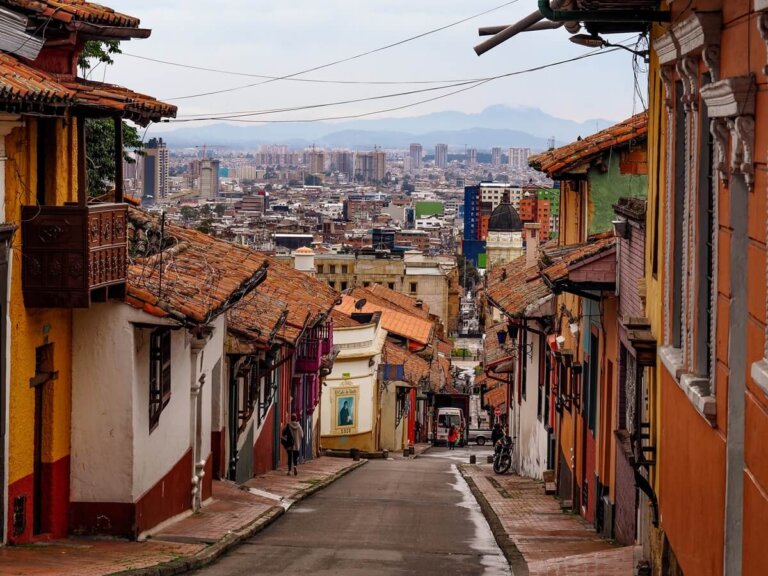

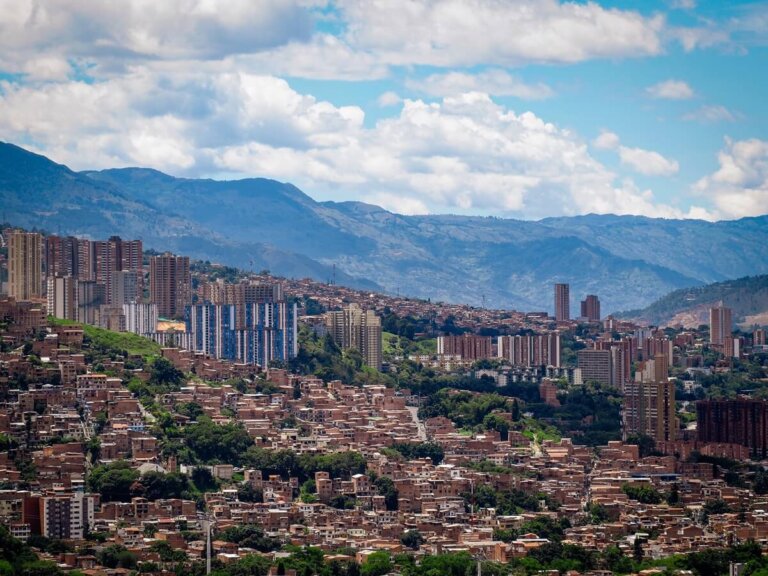
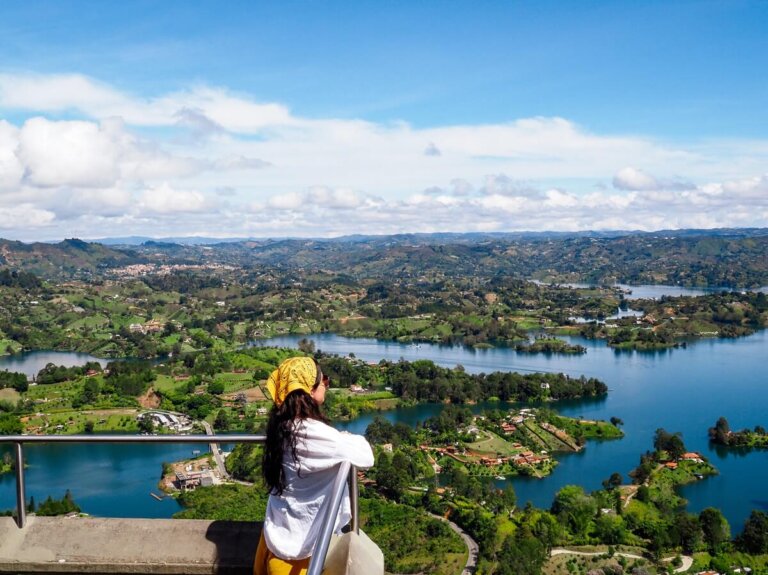
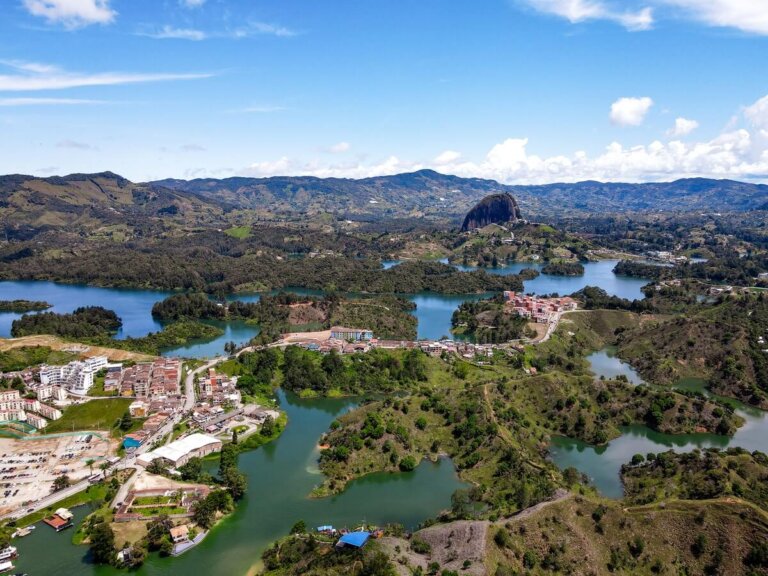
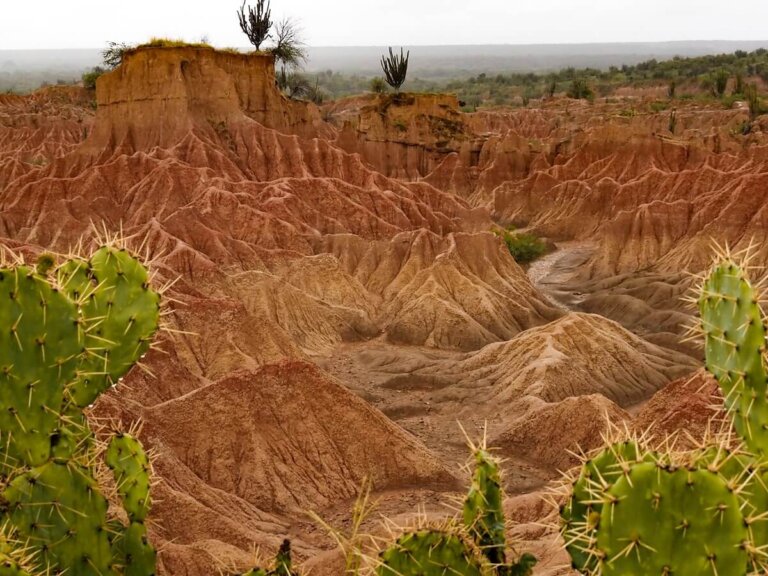
Thanks Kitti, Always enjoy reading your colourful and very detailed posts.😍
Thank you Karan, it means a lot! 🙂